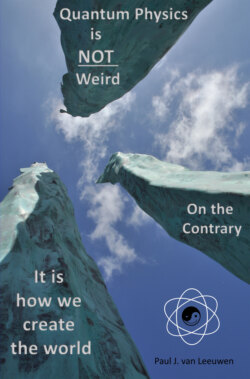Читать книгу Quantum Physics is not Weird. On the Contrary. - Paul J. van Leeuwen - Страница 34
На сайте Литреса книга снята с продажи.
Diffraction grids, a whole series of parallel slits
ОглавлениеDiffraction gratings or diffraction grids follow exactly the same principle as Young's double-slit. The practical difference is that diffraction grid result shows considerably sharper lines of a higher intensity. A diffraction grid consists of a great number of parallel slits with very small and precisely equal mutual distances. The earliest form of a diffraction grid was a smoke blacked glass plate where a large number of parallel scratches was carefully applied to the soot. When lit with parallel traveling monochrome light, coming from a distant source, each slit will function as a Huygens wave source vibrating synchronously with the other slits, all slits producing then the same circular extending waves. A positive lens is applied then to focus these waves on a photosensitive screen. In a number of very specific locations on that screen, all arriving waves will just differ exactly a whole number of wavelengths, thus creating constructive interference.
When hitting the projection screen, sharply focused by the lens, these waves will all reinforce each other precisely and only in very definite angles producing sharp defined light lines. Destructive interference will occur in just slightly different directions because of the contribution to the interference from multiple slits. That way much sharper interference lines can be obtained than with a simple double-slit. With such diffraction grids the wavelengths of all kinds of EM-waves, not restricted here to the visible spectrum, can be measured with great precision. The geometric principle, where the angle that the light rays make with the slit holder determines the path length difference, is completely identical to the double-slit principle. See figure 4.11 for a geometric construction of the path length differences for a diffraction grid.
Figure 4.11: A diffraction grid with slits. Source: Wikimedia Commons.
In figure 4.11, g is the distance between the slits, φ is the angle at which the light measurements are made, and d is the path length difference between the waves originating from adjacent slits. The relationship between g, d and φ can be used to calculate the wavelength. Just for completeness, the formula is: sin (φ) = n.λ/g where n is the sequence number of the intensity maximum counted from the primary middle maximum.
But to understand quantum physics it isn't necessary to memorize or even understand this formula. Forget it if you will. It's not really relevant in understanding the subject of this book, quantum physics. Just remember that every diffraction grid or grating will produce interference effects in very distinct directions by creating synchronous wave sources departing from the slits.
Figure 4.12: Reflection on a diffraction grid with grooves such a DVD.
Source: Wikimedia Commons.
Reflection of light on parallel grooves, such as with light falling on the tracks of a DVD, will also produce diffraction effects. See figure 4.12. The principle as depicted in figure 4.11 remains the same for reflection, only the beam I0 arrives in this case from the right and synchronous wave sources will now also depart to the right. This explains the rainbow-like effects that you will observe when white light falls on a DVD. White light contains different wavelengths (colors) which need different angles for constructive interference and thus projects maxima at different locations. In this case the lenses in our eyes act as focusing lenses and our retina act as the photosensitive screen.
Diffraction experiment [23]: You can try this for yourself with a DVD or CD. Use light from different sources, an incandescent lamp, a fluorescent lamp and an LED lamp. What is the difference? Can you explain the difference? Can you roughly estimate the groove distance from what you observe if you know that yellow light has a wavelength of around 575 nanometers?
